“Crafting Multi-dimensional Characters”
When I visit schools, part of my presentation includes a character sketch activity with students. Not only is it fun and interactive, but building a character forms the basis on which the rest of your story revolves around. Even with an intriguing plot, you still need a dynamic character to follow. Someone you can relate to and root for. We all know the cliches: the princess, the knight, the dragon. But sometimes it’s good to mix it up a little. The princess knight or, better yet, the princess dragon is far more interesting.
This concept works well with my new picture book, Yasuko and the Dream Eater, which is inspired by a Japanese legend about the dream eater, who eats bad dreams when called 3 times. What makes this character so unusual is that traditionally it is made up of five different animals. It has the head and trunk of an elephant, the eyes and ears of a rhino, the tail of an ox, the arms and legs of a tiger, and the belly of a bear. It also has a curly mane that looks like a lion, although it isn’t part lion. Some kids think it is part unicorn, because the mane has blue and pink colors shimmering within it.
We talk about culture and diversity, and how having multiple backgrounds makes you unique. Just like my main character, Yasuko, is both Japanese and American, the dream eater is made up of many different animals. And just like a character can be a cat or a dog or a mouse, it could also be made up of all these animals, which would be unique indeed! In the story, Yasuko feels different when visiting her grandmother in Japan. Making the origami crane is not the same as making paper airplanes at home in America. She also misses her goodnight hug from her parents. In Japan, family members often pat children on the head to show affection rather than offer a hug at bedtime. By the end, Yasuko learns that she can connect to her grandmother in other ways, and that clasping hands together can also feel like a tiny hug. So with our own stories, we can seek to not only show how our characters are unique but why that makes them special.
Try this with your students: Using a large pad of paper or wipe board, ask your students to name 5 creatures (including animals, mythical beings, robots, aliens, etc.) List those on the board, then talk about at least one defining trait for each. Then it is your turn (or perhaps another student can volunteer) to make up a new animal or creature based on all 5 listed. This is where it gets interesting! But kids love to see the results. They can also each draw one on their own. Or for younger children, you can provide puzzle piece cutouts of different animals, split in 3 pieces. Children can take turns making new, mixed up animals, by rearranging the animal parts.
Take it one step further: You can also talk about the basic elements of story. Students often ask me where to start when writing. All they really need to know is who their character is, what they want, and what gets in the way. You can often accomplish this by establishing what your character’s interests are as well as what scares them. One group of students said their character, who looked like a dust bunny, liked to play with Barbies but was afraid of cheese. Now this may sound silly, but the basis of many great stories starts with asking the question, What if? What if the dust bunny wanted to play with her Barbies, but a hunk of sharp cheddar cheese left by a mouse was guarding the dolls. How can she surpass the obstacle to get what she wants?
Creating dynamic characters goes beyond physical traits. They can have brown hair and blue eyes or blue hair and brown eyes, but we also need to know their personality. That is where learning their likes and dislikes comes in, as well as how they behave and why. It’s especially important to move beyond the cliché. You can have a main character who wants to be in the talent show, but the villain or antagonist is a bully preventing them from joining. What if you turned it around and made the main character the bully instead? Or try giving your character two opposing qualities that they are battling with throughout the book. We can go back to the princess knight who wants to fight dragons but also wear fancy dresses. Maybe she isn’t allowed to go to the ball unless she puts down her sword and forgoes her helmet. Or the dragon princess who isn’t accepted because she’s green and has scales and doesn’t fit the stereotypical look of what a princess should be. This would form an internal struggle as well as an external struggle. Just like Yasuko in my book, how can your characters learn to accept both parts of themselves?
I think the key is to teach kids that we’re all basically complex characters in our own lives. And none of us wants to be judged, liked, or disliked based on just one trait. So if we create more interesting and complex characters in our stories, we’ll be representing a more diverse and realistic picture of the world. The more intriguing and unique our characters are, the more fascinating their stories will be, and the more likely readers will want to turn pages to find out what happens to them. Especially because the stories we read can help us learn something about our own lives and how to move about and thrive in a complex world.
GIVEAWAY!
A. Kidd author would be delighted to give away one copy of her new book, Yasuko and the Dream Eater. To participate, simply leave a comment on this blog post and a contact email. One lucky winner will be chosen at random. You must reside in the US.
Published April 11th, 2023 by Quiet Storm Publishing
About the Book: Yasuko has the same bad dream every night while visiting her grandmother in Japan, so her grandmother suggests she call the dream eater for help. When the dream eater is still hungry after devouring Yasuko’s nightmare, Yasuko must stop it from gobbling up her good dream too.
Inspired by a Japanese legend, Yasuko and the Dream Eater will help kids dealing with nightmares as well as celebrate what it means to be part of a bicultural family. The book is fully illustrated and includes an author’s note, cultural note, and instructions for making origami.
About the Author: A. Kidd lives in the US but has travelled to Japan many times to visit family and for sightseeing. Japan feels like her second home. Although she dreams often, she hasn’t needed to call the baku yet. She is also the author of the middle grade fantasy, The Healing Star.
A. Kidd is available for author visits! For more information, please email her at a.kiddwrites@gmail.com or visit her website at www.akiddwrites.com. She loves to inspire young writers. Her motto is, if A. Kidd can do it, so can they!
Thank you for this fun activity, examples, and the GIVEAWAY!
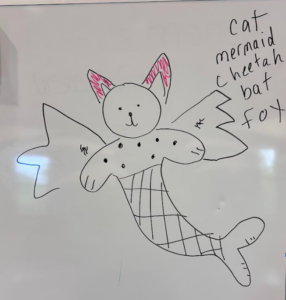
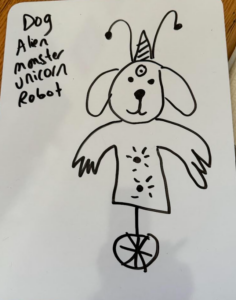
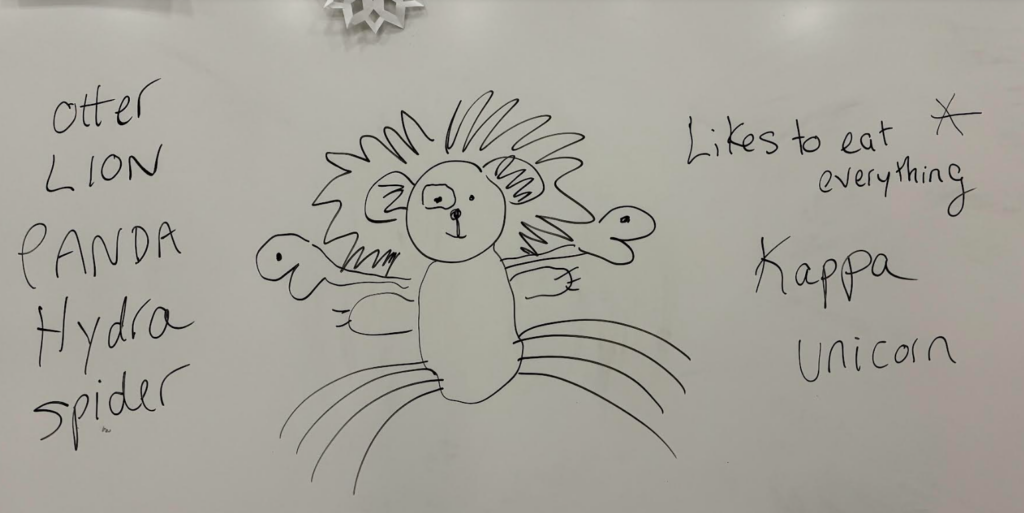
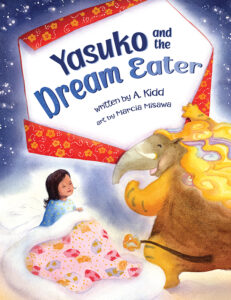
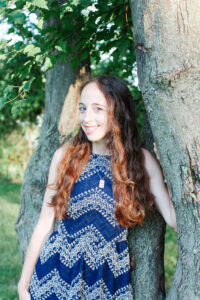

What an interesting idea for a book! My son would love it and I can’t wait to do the creature creation with him. So fun!
Hi Angela, you are the winner of the book giveaway! Congrats! Please email me at a.kiddwrites@gmail.com with your mailing address and your son’s first name, if you want the book personalized to him.
Hi again Angela, I haven’t heard back yet about the giveaway. Let me know if you’re still interested and your email, otherwise I’ll move onto the next person. Thanks for reading!
What a fun activity! The dream eater sounds like a crazily fun character, with all those animals mixed together!